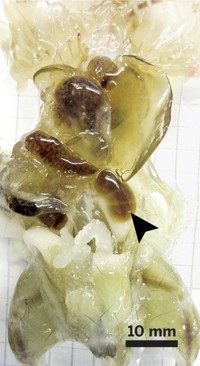Advertisement
Grab your lab coat. Let's get started
Welcome!
Welcome!
Create an account below to get 6 C&EN articles per month, receive newsletters and more - all free.
It seems this is your first time logging in online. Please enter the following information to continue.
As an ACS member you automatically get access to this site. All we need is few more details to create your reading experience.
Not you? Sign in with a different account.
Not you? Sign in with a different account.
ERROR 1
ERROR 1
ERROR 2
ERROR 2
ERROR 2
ERROR 2
ERROR 2
Password and Confirm password must match.
If you have an ACS member number, please enter it here so we can link this account to your membership. (optional)
ERROR 2
ACS values your privacy. By submitting your information, you are gaining access to C&EN and subscribing to our weekly newsletter. We use the information you provide to make your reading experience better, and we will never sell your data to third party members.
Polymers
Harnessing cells to build functional materials
Polyaniline coating changes the firing frequency of targeted neurons
by Celia Henry Arnaud
March 21, 2020
| A version of this story appeared in
Volume 98, Issue 11

Researchers have shown that they can co-opt specific cells in biological systems to orchestrate the construction of functional materials. In turn, those materials can alter cell behavior, in this case influencing the firing pattern of neurons. Zhenan Bao and Karl Deisseroth of Stanford University and coworkers harnessed neurons to make a conductive polyaniline mesh coating (Science 2020, DOI: 10.1126/science.aay4866). To make the polymer coating, the researchers used viral vectors to deliver the gene for an ascorbate peroxidase called Apex2 to specific neurons. Hydrogen peroxide triggers the Apex2 to polymerize polyaniline from a 1:1 mixture of aniline monomers and dimers. The key was getting the right ratio of ingredients to ensure enough hydrogen peroxide for the reaction to proceed without damaging the cells. With the 1:1 mixture, a polyaniline mesh forms on the outer surface of the cell membrane of neurons expressing Apex2. The firing pattern changed for neurons with the polyaniline coating. The method could be used to engineer neural circuits in cultured neurons, brain slices, and intact Caenorhabditis elegans worms. Further, the researchers demonstrated that the approach works with other cell types by targeting cultured human embryonic kidney cells. The researchers want to extend the method to other types of cells and materials.





Join the conversation
Contact the reporter
Submit a Letter to the Editor for publication
Engage with us on Twitter